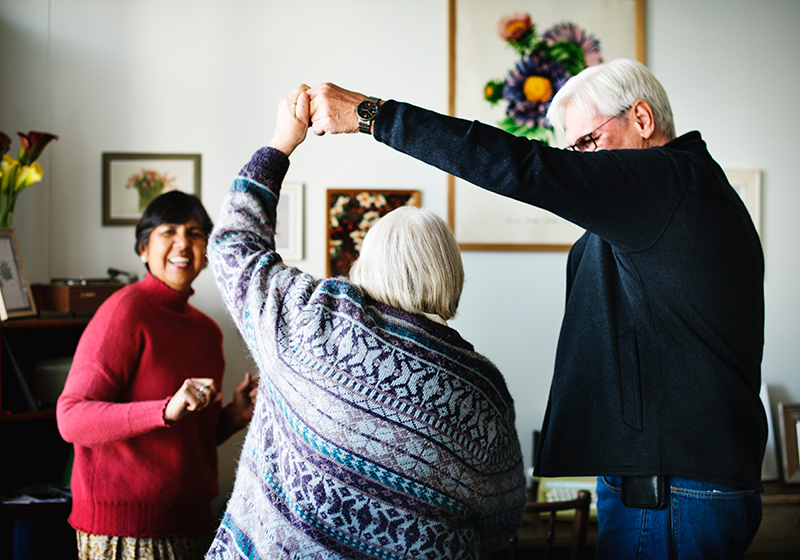The world of aged care is changing fast. Really fast. Experts predict that the majority of older Australians will choose to have some or most of their home care delivered remotely in the coming years. This isn’t just a pandemic-driven trend that’ll fade away—it’s the new hybrid care model reality.
But here’s the thing: it’s not about replacing human connection with technology. The hybrid care model isn’t about choosing between a caring face-to-face visit or a sterile video call. It’s about intelligently combining both to create something better than either could achieve alone.
What Hybrid Care Actually Looks Like
Think of hybrid care as having the best of both worlds at your fingertips. One day, you might have a physiotherapist visit your home to work on mobility exercises. The next, you’re chatting with your GP via video call for a medication review. Both are part of the same care plan. Both matter equally.
The magic happens in how these different touchpoints work together. Remote monitoring devices track vital signs between visits. Video consultations handle routine check-ups. In-person visits focus on hands-on care that truly needs that human touch. It’s not random—it’s strategic.
Many older Australians are finding positive experiences with virtual care, with some finding it comparable to in-person visits. Interestingly, the oldest patients often prefer phone calls over video platforms, which tells us something important: hybrid care adapts to what people actually want and can manage.
How Blended Care Works in Practice
Let’s break down what this looks like day-to-day:
Morning medication reminders might pop up on a television screen through smart TV platforms, using familiar technology to support older persons at home. No smartphones required—just the TV they’ve been using for decades.
Regular check-ins happen via video calls, allowing family members who live interstate to join consultations. Suddenly, that daughter in Melbourne can be part of mum’s care planning in Cairns.
Emergency monitoring runs quietly in the background. If sensors detect a fall or unusual patterns, care teams get immediate alerts. But here’s what’s clever: the system learns. It knows that Mrs Johnson always gets up twice during the night, so it doesn’t sound false alarms.
Scheduled home visits focus on the care that genuinely needs hands-on attention. Personal care, physical assessments, medication management. The time that would have been spent on routine check-ups gets redirected to where it’s most valuable.
This isn’t theoretical. Virtual healthcare services are already conducting daily ward rounds and family meetings, helping patients stay in their home communities rather than being transferred to distant hospitals.
Benefits for Regional and Rural Australians
If you’ve ever lived outside a major city, you know the healthcare challenges. Specialists are hours away. Simple appointments mean full days off work. Bad weather can mean missed care entirely.
Hybrid care is changing this equation dramatically.
Geographic barriers shrink. That cardiologist in Adelaide can now consult with patients across South Australia without anyone leaving home. Virtual models are significantly reducing unnecessary patient transports from small communities to larger regional hospitals.
Specialist access expands. Rural areas have fewer specialists per capita compared to urban areas. Virtual consultations help bridge this gap without requiring specialists to relocate or patients to travel repeatedly.
Emergency support improves. When local GPs need specialist backup at 2am, virtual emergency services provide immediate consultation. Lives get saved because expertise is available instantly, not after a three-hour drive.
Continuity of care increases. Instead of seeing different doctors depending on who’s available locally, hybrid models allow patients to build ongoing relationships with specialists who understand their health journey.
The evidence suggests that patients with multiple chronic conditions are finding frequent virtual appointments particularly beneficial, indicating the model works well for those who need the most support.

Technology Requirements and Support Options
Here’s where many people start to worry. “I’m not tech-savvy.” “What if it breaks?” “I can barely use my phone.”
Good news: the best hybrid care systems are designed for people who don’t consider themselves technology experts.
Television-based systems use existing TVs as the main interface. No learning new devices. No downloading apps. Just point the remote and talk.
Voice-activated technology is becoming more prevalent, making it easier for older persons to communicate and access support without complex button pressing.
Wearable devices for health monitoring are getting simpler and more reliable. Think of them as advanced medical alert buttons that do much more than just call for help.
Support infrastructure matters hugely. The most successful programs include:
-
Technical setup assistance
-
Ongoing troubleshooting support
-
Clear, simple instruction materials
-
Backup communication methods when technology fails
But here’s what experience shows: technological issues do lead to some negative experiences. The solution isn’t perfect technology—it’s better support systems and realistic expectations about what works for whom.
Internet connectivity remains a barrier, particularly in rural areas. Some hybrid models address this by using local clinics as technology hubs, where medical assistants help patients navigate digital tools while maintaining that human connection.
The Integration Challenge
The biggest hurdle isn’t the technology itself—it’s making all the pieces work together seamlessly. Effective hybrid care requires new workforce roles, updated payment systems, and expanding concepts like digital command centres and care coordination.
Digital command centres monitor patient data from multiple sources, alerting care teams when intervention is needed. AI can flag concerning changes in vital signs or behaviour patterns, but human expertise interprets what action to take.
Care coordination becomes more complex but also more powerful. When in-person and virtual care providers share real-time information, care becomes more responsive and preventive rather than reactive.
Flexible service delivery adapts to individual needs. Some weeks might require daily virtual check-ins. Others might need intensive in-person support. The system flexes rather than forcing people into rigid care models.
What This Means for Families
For families navigating aged care decisions, hybrid models offer something unprecedented: choice and flexibility without compromising quality.
Adult children living far from aging parents can be more involved in care decisions through virtual family meetings. Geographic distance becomes less of a barrier to staying connected and informed.
Care costs can be more manageable because virtual services often cost less than equivalent in-person visits, while still maintaining safety and connection.
Most importantly, hybrid care supports what most people actually want: aging in place with dignity, independence, and appropriate support.
The future of aged care is hybrid, and it’s arriving faster than many expected. The question isn’t whether these models will become standard—evidence suggests they already are. The question is how quickly we can make them accessible, reliable, and genuinely helpful for the people who need them most.
Ready to explore hybrid care options as part of comprehensive home care support? Contact the friendly CCH Home Care team today on 0437 954 452 to discuss how blended care approaches might work for your family’s unique situation.

